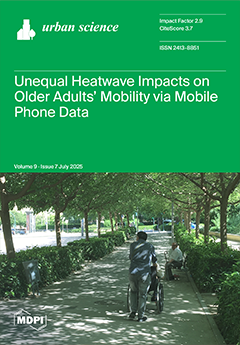Background: This review explores the influence of eco-anxiety on sustainable consumption, with a specific focus on the urban context. While the literature on green consumerism continues to expand, the role of emotional and psychological factors, especially eco-anxiety, in shaping sustainable consumption decisions remains
[...] Read more.
Background: This review explores the influence of eco-anxiety on sustainable consumption, with a specific focus on the urban context. While the literature on green consumerism continues to expand, the role of emotional and psychological factors, especially eco-anxiety, in shaping sustainable consumption decisions remains underexplored. Most existing studies emphasize cognitive, social, or contextual drivers, often overlooking affective dimensions that may significantly influence consumer behavior. Addressing this gap, the review examines how emotional responses to climate change, such as eco-anxiety, inform and potentially motivate eco-friendly consumption patterns. Understanding these affective pathways offers valuable insights on how individuals and urban communities can effectively adapt to climate change and establish a sustainable consumption culture.
Methods: A systematic literature search was conducted in Scopus and Web of Sciences databases, following a predefined keyword strategy, resulting in 56 initial records. We further implemented a supplementary search of gray literature on Google Scholar to search for additional reports. The full-text screening process identified 12 eligible studies based on the following inclusion criteria: quantitative or mixed-methods studies focusing on adult and young adult individuals, including both measures of eco-anxiety and green consumption and assessing their direct or indirect relationship.
Results: Findings suggest that eco-anxiety functions as a cognitive–affective motivator for sustainable consumer choices; however, the strength and direction of this influence appear contingent on moderating emotional and psychological variables and cross-cultural and demographic moderators.
Discussion: This review highlights the need for urban-focused intervention tailored communication, marketing, and business strategies that address the emotional dimensions of climate change. Policymakers and businesses are encouraged to consider affective drivers as eco-anxiety to promote sustainable consumption stewardship within urban communities. By addressing these psychological responses, urban societies can become more resilient and proactive in confronting climate change challenges.
Full article





